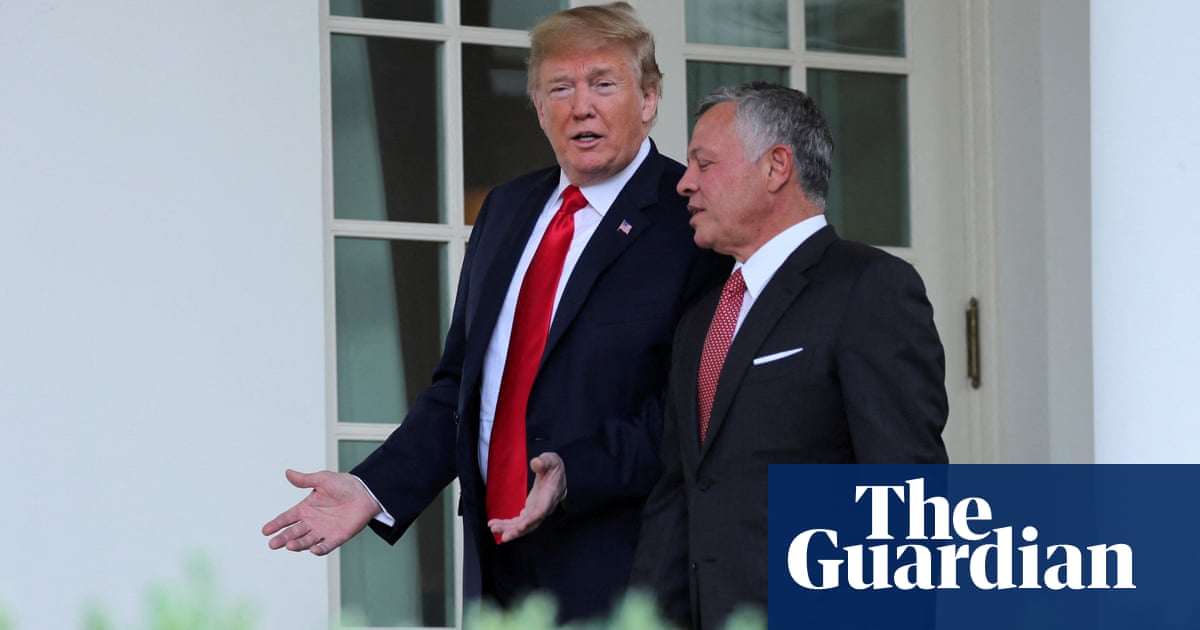Rachel Reeves’s plans for growth suffered a double blow after the Bank of England halved its forecast for the year and warned households would face mounting pressure from rising prices.
In a downbeat assessment as it cut interest rates for a third time in six months, Threadneedle Street warned people would face a fresh squeeze on living standards from rising inflation even as the economy stalled.
Cutting rates by a quarter of a point to 4.5%, the central bank’s heightened concern was underscored by a steep downgrade in its 2025 growth forecasts. It now expects the economy to grow by just 0.75% this year, compared with a previous forecast of 1.5% made in November, in a fresh blow for Reeves as she battles to revive confidence.
A week after the chancellor gave a major speech to restate the government’s commitment to growth, the Bank said it was cutting its forecasts to reflect fragile business and consumer sentiment and near stagnant activity after the October budget.
Business leaders have blamed the sharp fall in confidence on Reeves’s decision to increase employer national insurance contributions by £25bn from April, while concerns are also rising over the global outlook as Donald Trump launches a tariff war on America’s allies and enemies alike.
Some analysts suggested the Bank’s forecasts showed the UK sliding towards “stagflation” – a toxic combination of weak growth and high inflation which is hard for policymakers to manage.
Jonathan Haskel, a former Bank rate-setter, said stagflation was the right word to describe the “difficult position” Britain faced, telling the BBC: “I’m afraid it’s not very pretty, OK.”
Susannah Streeter, head of money and markets at Hargreaves Landsdown, said: “The risks of stagflation are stark. Inflation remains above the Bank’s 2% target and price pressures are piling up, but the economy is stagnating, and business confidence has taken a knock.”
Keir Starmer said the reduction in borrowing costs, which should help to bring down mortgage rates, would put more money in people’s pockets. But pressed on the growth outlook, the prime minister said: “Look we’ve got more to do, we were never going to turn this around in six or seven months, so that just spurs us on.”
The Bank’s monetary policy committee (MPC) voted by a majority of seven to two for an immediate cut in borrowing costs from 4.75% to 4.5%. The decision led City traders to bet that Britain’s sluggish economic prospects would force the Bank into a deeper round of rate cuts later this year.
Two of the MPC’s nine members backed a more drastic half-point cut in the face of the deteriorating growth outlook.
Andrew Bailey, the Bank’s governor, said the weakness in the economy meant the central bank would take a “gradual and careful approach to reducing rates further”, as it prepared to prioritise protecting the economy despite the short-term rise in inflationary pressures.
“There will be a bump in the road [from inflation] but we don’t think that bump is going to have a lasting effect,” he said.
Paul Nowak, the general secretary of the TUC, said further rate cuts were required to support households and businesses. “This rate cut is badly needed to help lift the economy out of stagnation. The Bank must now keep moving with further cuts,” he said.
The Bank expects inflation to rise from 2.5% now to 3.7% by the summer, well above its 2% target, as household energy prices rise, as well as water bills and bus fares.
The Bank’s gloomy assessment is likely to be echoed by a similar downgrade from the independent Office for Budget Responsibility (OBR) when it publishes updated forecasts on 26 March.
Last month Reeves came under scrutiny amid a rise in government borrowing costs, fuelled by higher-for-longer rate expectations in Britain and the US. This led to warnings that she could be forced to increase taxes or cut spending to avoid breaking her fiscal rules.
after newsletter promotion
But some economists suggested on Thursday that the economy was now so weak that it may drive down borrowing costs for the government, as investors bet on rate cuts.
“The Bank’s downbeat assessment may contain a silver lining,” said James Smith, research director at the Resolution Foundation. “The MPC may quicken the pace of interest rates cuts this year, reducing debt-servicing costs to give the chancellor some much-needed headroom.”
Reeves has previously signalled that potentially downbeat OBR forecasts putting her fiscal rules in danger would be met with spending cuts to balance the books.
However, union leaders urged the government to prioritise growth-enhancing projects to reboot the economy. Unite general secretary Sharon Graham said: “No investment equals no growth. So what are we waiting for? There are plenty of projects crying out for public investment that will drive growth and create good jobs.”
Reeves’s plan for economic growth is focused on clearing the way for private sector investment in infrastructure, including a third runway at Heathrow.
The Bank welcomed the chancellor’s policies, but said it had not upgraded its forecasts accordingly, as such reforms take years to bear fruit. “Addressing those questions is critical, so we very strongly agree with the chancellor on this point,” Bailey said.
He also suggested Labour’s commitment to reforms and “showing real signs they are going to happen” could help to reboot animal spirits among business, in a benefit for the economy in the shorter term.
The Bank said it was monitoring Donald Trump’s on-off tariff policies closely, though it had not included their impact in the current forecast.
Bailey warned that Britain would not be immune to a global trade war. “Greater global protectionism would be likely to have a negative impact on world economic activity in the medium term, and lead to increased trade fragmentation,” he said.
The shadow chancellor, Mel Stride, said of the reduction in interest rates: “This will be welcome news for many families and businesses who have been hit hard by Labour’s mismanagement.”
Article by:Source: Richard Partington and Heather Stewart













